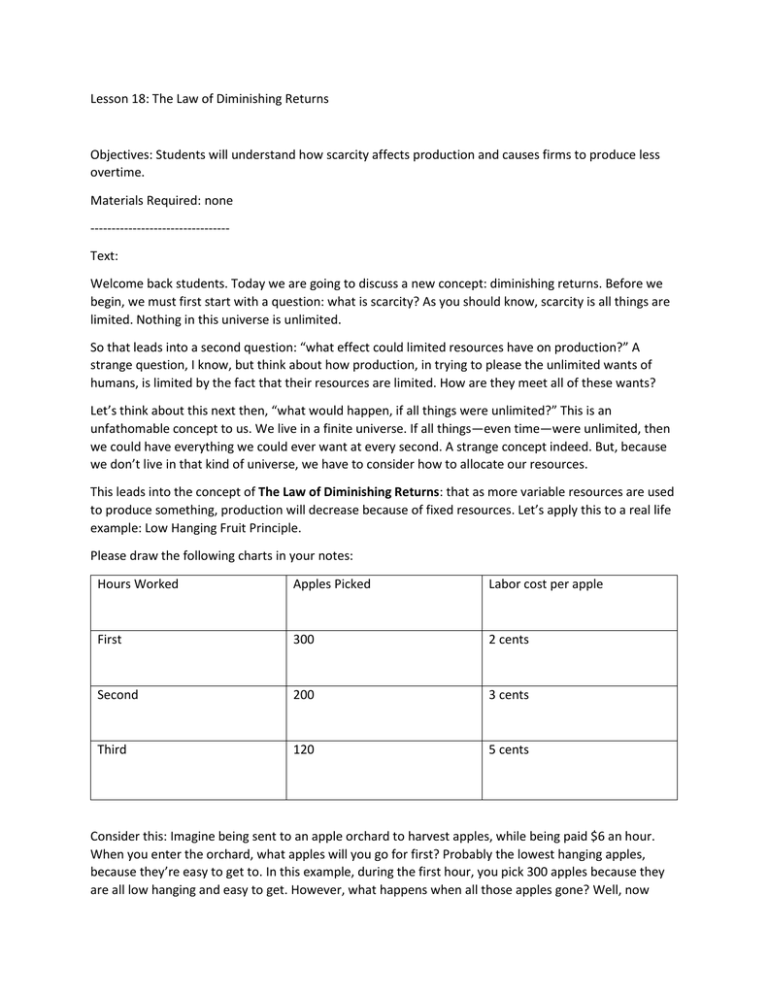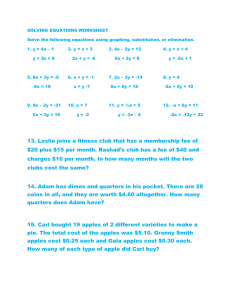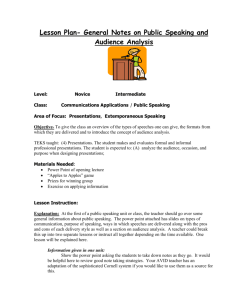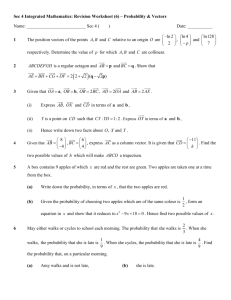Lesson 18: The Law of Diminishing Returns Objectives: Students
advertisement

Lesson 18: The Law of Diminishing Returns Objectives: Students will understand how scarcity affects production and causes firms to produce less overtime. Materials Required: none --------------------------------Text: Welcome back students. Today we are going to discuss a new concept: diminishing returns. Before we begin, we must first start with a question: what is scarcity? As you should know, scarcity is all things are limited. Nothing in this universe is unlimited. So that leads into a second question: “what effect could limited resources have on production?” A strange question, I know, but think about how production, in trying to please the unlimited wants of humans, is limited by the fact that their resources are limited. How are they meet all of these wants? Let’s think about this next then, “what would happen, if all things were unlimited?” This is an unfathomable concept to us. We live in a finite universe. If all things—even time—were unlimited, then we could have everything we could ever want at every second. A strange concept indeed. But, because we don’t live in that kind of universe, we have to consider how to allocate our resources. This leads into the concept of The Law of Diminishing Returns: that as more variable resources are used to produce something, production will decrease because of fixed resources. Let’s apply this to a real life example: Low Hanging Fruit Principle. Please draw the following charts in your notes: Hours Worked Apples Picked Labor cost per apple First 300 2 cents Second 200 3 cents Third 120 5 cents Consider this: Imagine being sent to an apple orchard to harvest apples, while being paid $6 an hour. When you enter the orchard, what apples will you go for first? Probably the lowest hanging apples, because they’re easy to get to. In this example, during the first hour, you pick 300 apples because they are all low hanging and easy to get. However, what happens when all those apples gone? Well, now you’re going to have to work a little harder. During the second hour, you pick fewer apples because you have to reach awkwardly for higher up fruit, but you have to still be paid $6 an hour. For every apple, you have become more expensive (input) while you pick fewer apples (output). During that third hour, you have to start jumping for apples (or worse, getting a ladder). You still have to be paid $6 an hour, but you produced so few apples (in this situation, the variable resource is time and labor. The fixed resources are the apples. Apples do not suddenly begin to appear). Think of it this way, as we produce more, costs rise because resources are so limited. There is only so much time, so many employees, etc. Because of our limited time, what do people have to do in response? We allocate. Here’s an example that many of you might have more in common with: have you ever had a job? Many of you probably agree to having had a job at some point. When you start work, you are probably fairly busy. Lots of work to do, things to take care of, so on and so forth. But you probably have notice that as your shift gets longer, you start running out of things to do. Your manager might have asked you to do something that you don’t normally do or cover for another person. This is because you are getting more expensive to have around and your productivity lessens as the shift continues forward. To counter this, the management tries to give you more work to offset this higher cost or they may simply ask you to leave early that day. This is diminishing returns in a nutshell. Now, let’s discuss allocation for a moment. Allocation is important to understand in this concept because the only way to offset diminishing returns is to allocate your resources. Let’s see the example below: Let’s say that the person who has the apple orchard also has an orange orchard. No matter what situation they’re in, their employees will produce less overtime. If the person has a whole farm of people picking only oranges, the last person to pick oranges will pick fewer oranges because there are less of them. The smart response is to take some people from the orange grove and have them pick apples because they can pick more apples that way (imagine the low hanging apples). Allocating resources allows people to produce more, despite diminishing returns. Overtime, their production rate will fall, but proper allocation can ensure that production is optimal. o Essentially, because they moved the employee who was running out of oranges to pick to the apples, this employee can become productive again. Closure: With this lesson in mind, please remember in the future that firms allocate resources in their own businesses to offset this gradual loss in productivity. They may allocate by reusing resources (like recycling), investing in new capital, or managing their labor force. Diminishing Returns is an unavoidable consequence in production that is caused by scarcity, but it can be controlled. Keep in mind this concept as we move into the next lesson.





